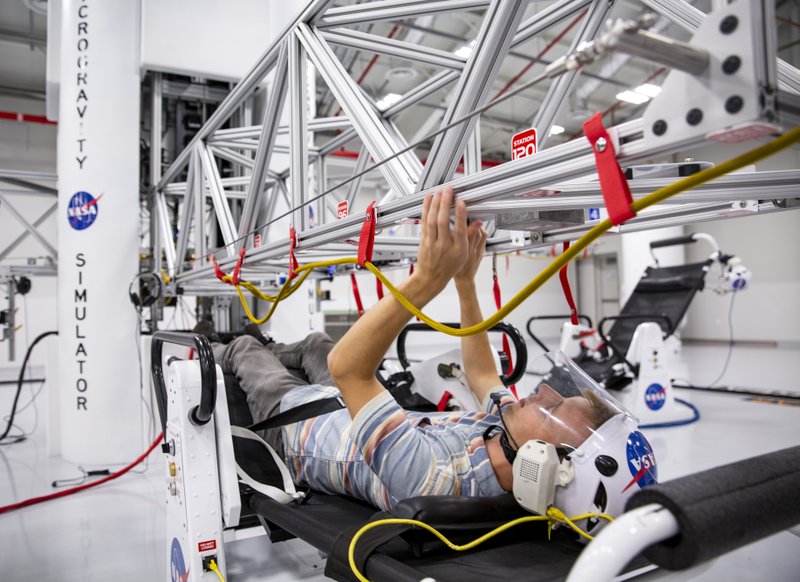If you've ever wondered what the process of becoming an astronaut is like, Kennedy Space Center Visitor Complex now has an experience that puts visitors in the shoes of a space explorer in training.
The center's Astronaut Training Experience, or ATX for short, features four different simulations, one of which involves microgravity simulation and another virtual reality. The common thread is that they all require teamwork and good communication.
Dee Maynard, manager of education programs at Kennedy Space Center Visitor Complex, said the experience was designed to keep visitors engaged the whole time.
"When we were designing this, one of our primary concerns was that we wanted people to be having an experience and not waiting around," Maynard said. "Also, astronaut training is very much a team effort."
One simulation helps visitors learn what it takes to launch NASA's Space Launch System, or SLS, rocket. Six people step into the role of launch control and communicate with six others who become the Orion capsule crew.
Amateur astronauts take turns reading and relaying instructions and sets of data from both sides. In mission control, visitors step into roles including flight director and spacecraft systems officer. Inside the capsule, people try their hands at jobs such as flight engineer, commander and MTV transit pilot. If there's a breakdown in communication, the mission could fail.
Across the room, the arms of a truss assembly stretch out above chairs that resemble the kind of zero gravity chair your uncle might have on his back porch. With the flip of a switch, the chairs hover across a frictionless floor, giving astronauts-in-training an experience that somewhat resembles the no gravity environment of space.
While strapped into the chairs, visitors wear a helmet with a camera and microphone to talk with a partner at a computer. Working together, the partners communicate to fix broken wires and modules on the space station arms.
Two different simulations help participants get a glimpse of what life on Mars might look like.
For the "land and drive on Mars" simulator, two brave individuals enter a tight capsule that either rocks gently or spins upside down, depending on the level of intensity. They, too, communicate with a partner back at a computer, who can give them the information they need to stop the spinning.
The "walk on Mars" simulator lets one partner play the role of a Martian astronaut collecting rock samples by using a virtual reality headset and hand-held controllers. Like the other simulators, the trainee back at the computer gives instructions to the person on Mars about which direction to head in and what to pick up, and communication is key.
Occasionally, a sandstorm will roll in and force you to work extra quickly. In one task, the Mars Rover needs attending to and the partner in the VR headset needs to flip switches in the proper order to get things going again.
Kennedy Space Center Visitor Complex has immersive programs geared toward friends and family of all ages.
"I think everybody who comes to an experience like this has a little bit of kid inside them," Maynard said. "They're doing something that really you can't do anywhere else in the world. I've seen adults get just as excited as the children."
For more information, visit kennedyspacecenter.com.
Travel on 05/05/2019

